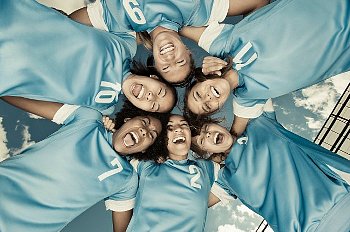
Soccer has been part of the Latino identity and the cultural pastime of playing in the streets is being passed down to younger generations. Leagues are popping up all over the United States for youth, intermediary levels and even Veteran level leagues are up and running all year round.
Athletes usually suffer from different injuries depending on their sport of choice. When it comes to futbolistas, their injuries fall into the category of ankle sprains and muscle strains, says podiatrist Dr. Anthony Pérez.
Pérez says that having good flexibility and stretching helps with strains. But he warns, stretch after warm ups. Muscles become more flexible after warming them up, preventing injury from simple stretches like touching your toes.
Without stretching, players are at risk for hamstring pulls and tears that run down the back of the legs.
Well-fitted cleats are also necessary to prevent any ankle injuries. Make sure they are not too snug at the toes, or that they are laced too tight. Making sure that clean and snug socks are worn help to prevent blisters on the feet, which are common among runners and soccer players.
Achilles tendonitis occurs from overuse and is felt behind the ankle. This pain should not be ignored as it can result in an Achilles tendon rupture.
Knee injuries are also common among soccer player and runners. Patellofemoral pain syndrome, or “runner’s knee,” is defined by pain around the knee cap. Torn ligaments and cartilage caused by jagged movements may also occur.
The best answer to prevent most of these injuries is stretching and warming up. Staying hydrated is also very important for keeping healthy out on the field.
In addition, to stretching and warm ups, consider adding training in the following specific areas to prevent any more serious injuries that could be quite damaging to the athlete.
- Increasing strength: Working out your legs via strength training will help build support of tendons and ligaments by increasing your muscle strength.
- Applying plyometric training to exercise programs: Plyos, for short, are designed for athletes to perform fast, powerful movements.
- Increasing proprioception: As complicated as it sounds, this is the body’s ability to predict and position where body parts should be during physical activity without even thinking about it. This is done after repeated motions and a familiarity with how certain tasks and skills are performed on the field.
